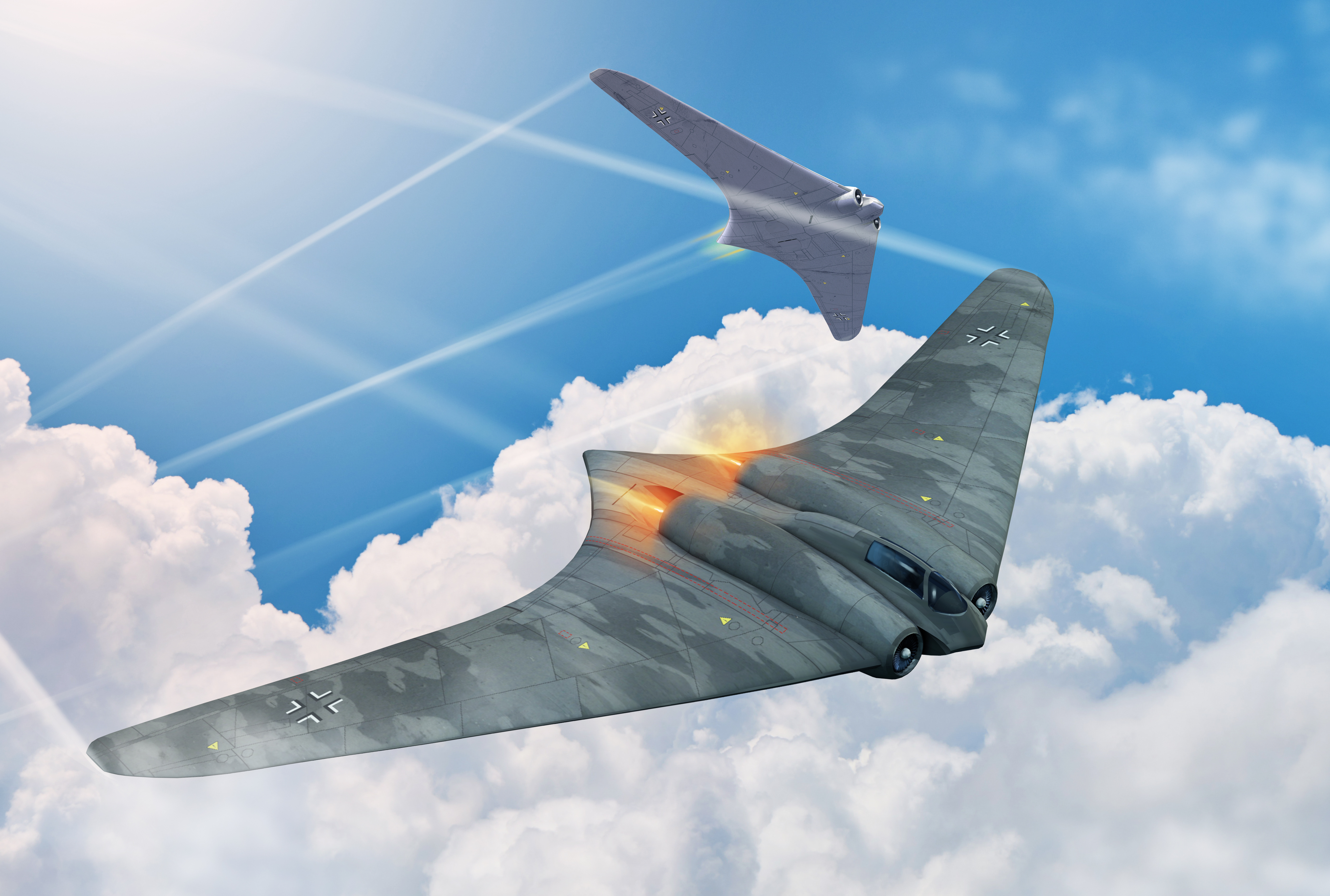
A stealth plane in the 1940s? Impossible, inconceivable? Did the Horten brothers really develop a stealth plane, or was it just propaganda?
In post-war interviews, Reimar Horten had hinted at experiments conducted by his team, by mixing charcoal dust and other compounds, together with glue used in cementing wood surfaces. He speculated that this would allow the laminate—specifically the wings to absorb a segment of electromagnetic waves or pulses that would typically emanate from the British Chain Home stations, commonly later identified as early warning radar.
The Hortens reasoned that the Horten Ho 229 had a smaller radar cross section (RCS) than other large aircraft, and could thus minimize or distort a typical radar signature on the operator’s scope.
Much later, in 2008, engineers at Northrop-Grumman constructed a full-scale replica of the Horten design, putting to test a long-held Hypothesis that the Ho 229 could deceive English radar operators.
The full-size non-flying model was suspended on a fifty-foot articulating pole and subjected to electromagnetic pulses, similar in frequency to those generated by the British defences in WWII.
Even though the model had no engines, the results were impressive. The model aircraft, simulated to fly at @530 mph, about fifty feet off the water would be visible to radar, but at about 80% of what a Messerschmitt BF 109 fighter—a much smaller aircraft—would register.
Taking into account the Horten’s superior speed, it’s reasonable to conclude that by the time radar operators would detect the approaching threat and scramble their fighters, a flight of Horten bombers would have already crossed the English Channel en route to their targets in England.
Fortunately, the war ended before mass production could tilt the balance in Germany’s favour. But if you were to ask Reimar Horten about the stealth capability of his design, he would nod stoically, the twinkle in his eyes speaking volumes.